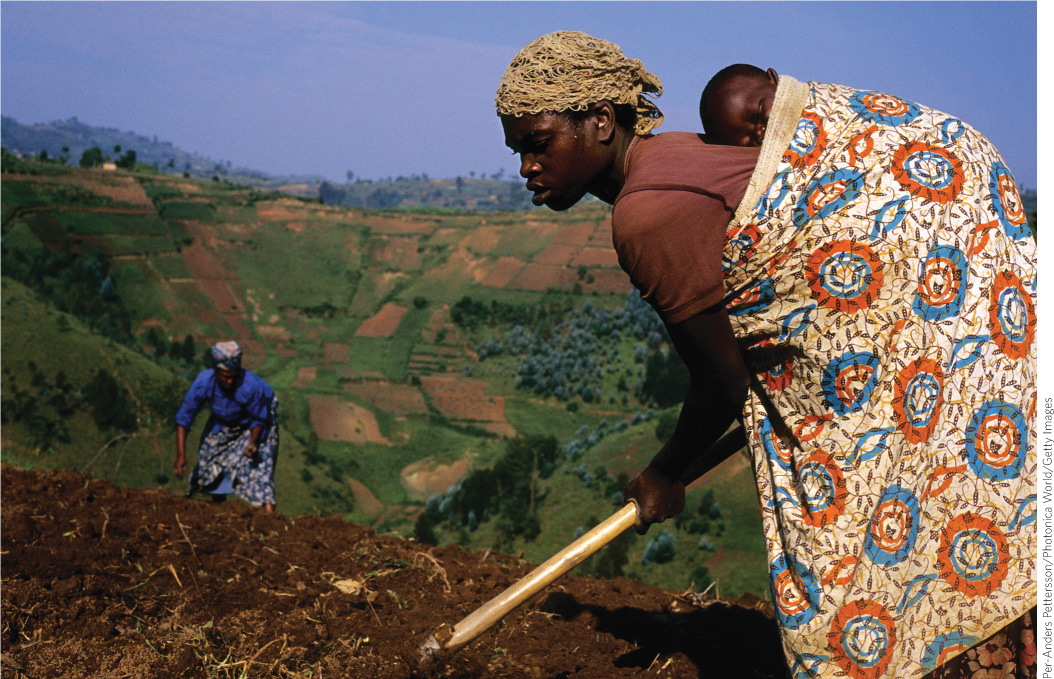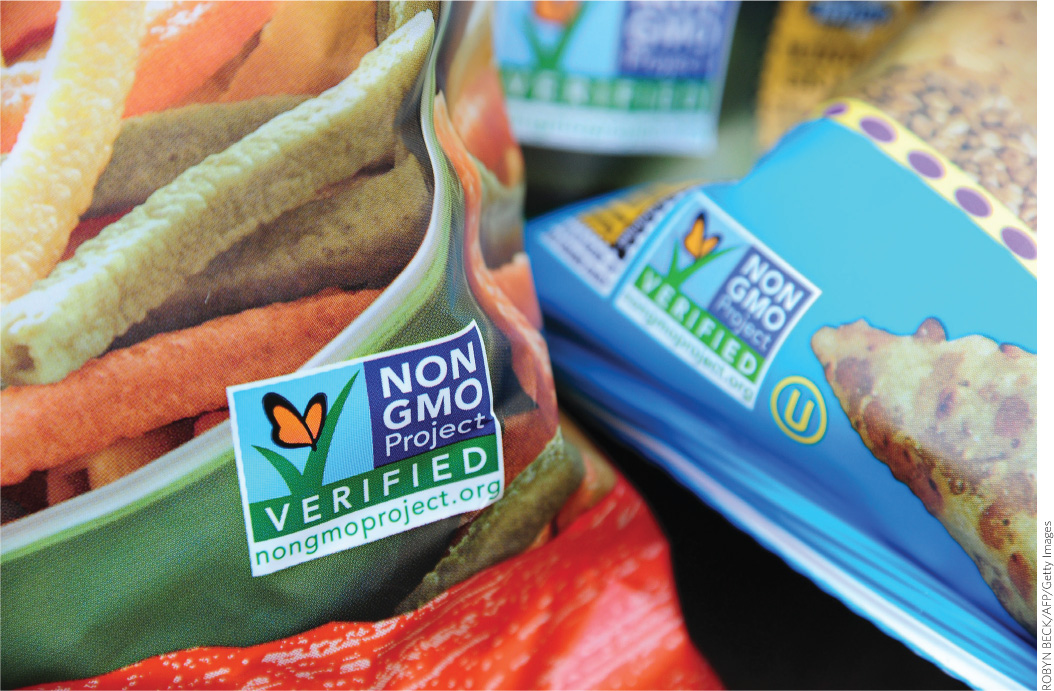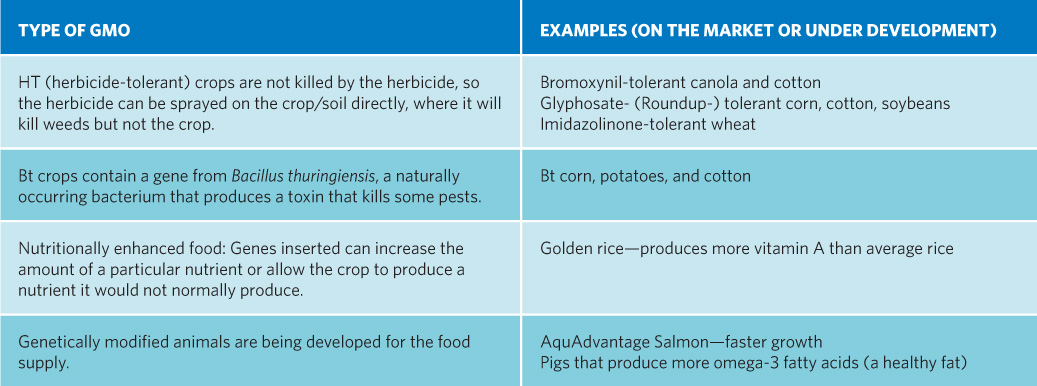The next Green Revolution may be a “gene” revolution.
As Robert Paarlberg and his driver made their way up one of Uganda’s countless narrow dirt roads, a collection of mud huts encircled by a patchwork of small and midsize fields came into view. The driver stopped, and the pair made their way through dry bush. A young boy tending goats spotted them from the distance and ran toward the huts to inform his kin of impending visitors. When they reached the village, Paarlberg and his driver-translator were greeted by a group of women and children: curious, welcoming, and eager to chat with outsiders.
Paarlberg, a Harvard-based political scientist, had been traveling throughout a northern swath of Sub-Saharan Africa—visiting Kenya, Benin, Cameroon, and now Uganda—in an effort to understand the countries’ opinions and attitudes about genetically modified crops. The women’s hospitality reminded him of the farmers he’d known as a boy, growing up in Indiana, but the rest of the scene contrasted sharply with such memories. In Indiana, crops were invariably bountiful: seas of grain billowing beneath an endless sky. In the evening, farmers—most of them hardy, cigar-smoking men—leaned against colossal tractors and other such equipment and bragged about the profits their crops were reaping.

Global population is expected to reach 10 billion by 2050; experts say that to feed that many mouths, we will need to produce twice as much food as we are now producing.
In West Africa, most of the farmers were women and school-aged children (conspicuously not in school). On this particular farm, crops of maize struggled to pop up through parched soil—starved for both water and nutrients. Cassava withered under the strain of a viral infection, and a single cow suffered from untreated sores. Still, the women were warm and chatty. They did not have chemical fertilizers, they told him. Or water pumps. Or any kind of machinery. In fact, there was no electricity.
And with the nearest road several kilometers away, everything they bought or sold had to be transported in or out of the tiny farming village on foot. Through the translator and the children who spoke some English, the women fretted about the weather, and crop prices, and how much grain they had in storage. These women knew absolutely nothing of the emerging technology Paarlberg had come to the region to discuss.
KEY CONCEPT 16.4
Genetically modifying crops (or animals) to contain useful traits may boost growth and expand the growing range of some crops but comes with environmental and ethical concerns.
As their name suggests, genetically modified organisms (GMOs) are organisms that have had their genetic information modified in a way that does not occur naturally. Scientists have been using such organisms for decades to produce insulin, antibiotics, and other important medicines. By inserting select genes into certain kinds of bacteria, they can coax those microbes into churning out large quantities of medically important compounds—like tiny living drug factories. In the 1990s researchers began applying the same technology to food crops such as corn, rice, wheat, and soybeans. By using bacteria as “vehicles” to transfer genes for desirable traits (like pest resistance, drought tolerance, and increased nutrient production) from one species to another, they have created a new suite of genetically modified food crops—plants that can grow more plentifully and thrive in a wider range of habitats than they ordinarily would. Organisms that have been altered in this way are known as transgenic organisms. INFOGRAPHIC 16.4
genetically modified organisms (GMOs)
Organisms that have had their genetic information modified to give them desirable characteristics such as pest or drought resistance.
transgenic organism
An organism that contains genes from another species.
Genetic material can be transferred from one organism to another. This can give organisms new traits that they haven’t naturally evolved but that may prove desirable. For example, the bacterium Bacillus thuringiensis (Bt) produces a toxin that kills many types of insect pests. If the gene responsible for that toxin is inserted into a plant’s genetic code, that plant will gain the ability to produce the toxin and will be able to ward off pests itself.


Two different bacteria species are used to produce the Bt plants shown here. What is the role of each in the process?
The first bacterium used is Bacillus thuringiensis – it is the source of the gene that is being inserted into the plant cells. The second bacterium is merely a vehicle to transport this gene into the plant cell. The gene is inserted into Argobacterium and then it infects the plant cell and delivers the new gene.

In the United States, more than 75% of processed food contains GMOs, including 85%—90% of our corn, soybeans, and cotton. Most of these crops have an herbicide-tolerance (HT) gene added that enables them to withstand huge doses of herbicides (chemicals that kill weeds). This trait enables farmers to douse the field with herbicide and kill the weeds without threatening their harvest. Other crops, known as Bt crops, have been engineered to better resist pests; they contain a gene from Bacillus thuringiensis, a naturally occurring bacterium that produces a toxin that kills some insect pests. Some crop GMOs even contain both an HT gene and a Bt gene.
Scientists are also working to add genetically modified animals to our food supply. The biotechnology company AquaBounty has developed AquAdvantage salmon—a genetically modified Atlantic salmon that grows much faster than normal (thanks to genes from the larger Chinook salmon). The Food and Drug Administration determined that the fish is safe to eat in a 2012 assessment but has yet to give the company approval to bring the fish to market. If approved, this would be the first genetically modified (GM) animal food product sold in the United States.
Paarlberg and others (including Microsoft founder and famed philanthropist Bill Gates) believe that GM crops will go a long way toward helping African farmers achieve food self-sufficiency. In fact, GMOs form the basis of what some farmers and scientists like to think of as Green Revolution 2.0, or the Gene Revolution—the next battle between human hunger and innovation, this time waged in Africa as well as Asia, and against not only hunger but poverty and sickness as well. “When you put the right tools in farmers’ hands, the results can be magical,” Gates said during a speech in Rome, Italy, in February 2012. “A submergence-tolerant seed capable of surviving in flood waters can grow into a rice surplus that [allows parents to afford to take] a sick child to the doctor…. And when that child grows into a healthy and educated young mother, the future is bright.”
Green Revolution 2.0
Programs that focus on the production of genetically modified organisms (GMOs) to increase crop productivity.
But are expensive GMO seeds and the chemical inputs they need a reasonable solution in impoverished areas, on small farms? Researchers Matin Qaim and Shahzad Kouser of the Georg-August-University of Goettingen looked at farmers with small farms in an area of India facing food shortages. Qaim and Kouser studied farmers that switched from traditional methods of growing cotton to growing Bt cotton. The farmers in the 6-year study that grew Bt cotton increased their income, and this correlated with a diet higher in calories and nutritional value for the farm families. In fact, fewer of the farm families that grew Bt cotton were classified as food insecure (7.93%) compared to families that grew traditional cotton (19.94%). The researchers acknowledged that GMOs are not the sole solution to world hunger but believe they can be part of the solution, even in less-developed countries. It remains to be seen if replacing traditional farming methods with industrial ones will be sustainable in these areas in the long run.
Proponents of the technology point to the possibility of not only increasing our food supply with GMOs but also improving it. GMO foods could be nutritionally enhanced with the addition of genes to produce needed vitamins. The most notable example is “golden rice,” which is genetically modified to produce extra beta carotene (a precursor to vitamin A), to help address vitamin A deficiency, a leading cause of blindness in children. TABLE 16.1


Do you have any concerns about eating food that contains GMOs? Should GMO foods be labeled?
Answers will vary but should be supported.
Of course, for the people of Africa to benefit from this new technology, they would have to first be made aware of its existence and then be persuaded to use it. And as Paarlberg was discovering in his travels, neither of those would happen easily. Not only were most local farmers completely unaware of GM technology, but government officials, who did know about it, were exceedingly wary.